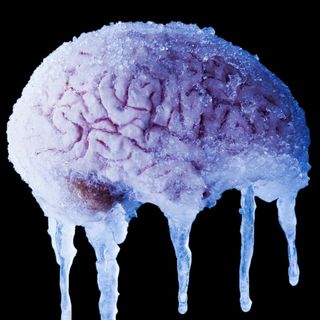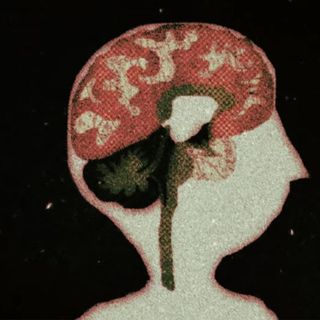
A Primer on Schizophrenia, the Psychiatric Disorder Affecting 20 Million People Worldwide
Schizophrenia is entirely treatable with existing antipsychotic medication, used in conjunction with psychological therapy and social support.

When it comes to complex psychiatric disorders like schizophrenia, our understanding of the condition and what it does to the brain remains fuzzy. Stigma, feeding off popular culture and misinformation, has taken root in this fuzziness, and the result is nearly 20 million people with schizophrenia worldwide — nearly 3.5 million in India — face discrimination and human rights violations.
People with schizophrenia are two to three times more likely to die prematurely due to entirely preventable physical diseases, such as cardiovascular disease. They are less likely to seek out appropriate medical care than neurotypical people due to stigma and a lack of access to mental health services. Nearly 70% of people with schizophrenia across the world are currently not receiving appropriate care. 5% of people with schizophrenia die by suicide; that’s higher than the suicide rate among the neurotypical population.
But schizophrenia is entirely treatable with medicines and psycho-social support. And, if people with schizophrenia are continuing to struggle through life and are not being able to seek this treatment due to stigma, it is up to the rest of society — the neurotypicals — to learn more about the condition and normalize it as something that affects millions across the world. To that end, here’s what you need to know about schizophrenia.
What is schizophrenia?
Schizophrenia is a chronic neurological disorder that hampers a person’s ability to consistently process reality. Schizophrenia is characterized by distortions in thinking, emotions, language, behavior, and sense of self, and manifests in experiences such as hallucinations (hearing, seeing, smelling, tasting or feeling things that are not there) and delusions (stubborn false beliefs or suspicions that are not held by others in the person’s culture and that remain fixed even where there is evidence to the contrary).
Symptoms of schizophrenia
Symptoms typically develop progressively in early adulthood — for men, in their late teens and early 20s, and for women, in their late 20s and early 30s. That said, symptoms can manifest outside this window as well.
According to the World Health Organization, common symptoms or experiences of having schizophrenia are:
- hallucinations
- delusions
- problems with motor control — for example physical tics or unusually slow movements
- disorganized behavior — for example, wandering aimlessly, mumbling or laughing to self, appearing unkempt after long periods of reduced motivation
- disorganized, incoherent, or irrelevant speech
- disturbances in emotions — for example, a marked apathy, or a disconnect between reported emotion and facial expression or body language.
A common misconception is that people with schizophrenia have a so-called split personality, but split personality is a characteristic of dissociative identity disorder, a separate but equally misunderstood psychiatric disorder. People with schizophrenia can find it difficult to distinguish between internal processes and external reality, but typically they retain a single, consistent sense of self. By contrast, a person with dissociative identity disorder displays at least two distinct personality states.
Related on The Swaddle:
Schizophrenic Auditory Hallucinations Linked to a Brain Malfunction That Begins In‑Utero
Causes of schizophrenia
Research is yet to point to a precise factor that causes schizophrenia, but the medical community sees it as an interaction between genes and a range of biological, environmental, and psychosocial factors.
Genetic factors associated with schizophrenia
Schizophrenia is highly genetic. A 2017 study from Denmark based on nationwide data on more than 30,000 twins estimated that 79% of the difference between those with schizophrenia and those without schizophrenia is attributable to genetic factors. But the study also found that the chances of both identical twins developing schizophrenia were only 33%, even though their genetic make-up, so to speak, was the same. This second statistic led researchers to conclude that schizophrenia is the result of a mix of genetic predispositions and other risk factors.
Environmental factors associated with schizophrenia
Being exposed to viruses, toxins, or pollutants, or experiencing malnutrition before birth, can increase the risk of schizophrenia.
Pyschosocial factors associated with schizophrenia
Childhood trauma, emotional, sexual and physical abuse, maternal stress and excessive use of mind-altering drugs (including marijuana) may also increase the risk of schizophrenia. Experiencing discrimination and social isolation can also be a risk factor for developing schizophrenia.
These factors combined tend to bring about biological changes in the brain. Again, no single hypothesis on how schizophrenia plays out in the brain has been confirmed, but several abound. One theory is that schizophrenia changes the way the brain manages the neurochemical dopamine; another implicates abnormal transmission of glutamate (a brain neurochemical that nerve cells use to communicate with each other). A third theory suggests abnormalities in connections between different parts of the brain; while a fourth theory posits that people with schizophrenia experience lower brain activity in key areas such as the prefrontal cortex and hippocampus, on account of having lower brain matter in these areas. Yet another theory points to a reduced amount of unsaturated fatty acids that make up the membranes of the brain’snerve cells. It is within these membranes in which neurotransmitters like dopamine and glutamate work).
In fact, the latest findings suggest that all these theories are true — they’re all linked in how they work together in a brain with schizophrenia. That is, schizophrenia impacts the brain’s ability to manage dopamine, which in turn is linked to and affects the modulation of glutamate receptors present between two nerve cells, because of the cells’ abnormal nerve membranes — combining to throw typical cognition and attention off balance.
Treatment for schizophrenia
Unfortunately, people with schizophrenia may find it difficult to accept they have a disorder that needs treatment, making ethical and consensual management of the condition tricky. But, the condition is entirely treatable with existing antipsychotic medication, used in conjunction with psychological therapy and avenues for social support.
How to help someone if you think they have schizophrenia
It can be difficult to convince people who have schizophrenia that they need to take medication or see a psychiatrist, even though these are the best ways to cope with this condition. But this isn’t denial, so be careful not to label it as such. According to the National Alliance on Mental Illness (NAMI), nearly 50% of people living with schizophrenia experience anosognosia, or a lack of awareness of their serious illness. Other times, people with schizophrenia may staunchly believe their delusions or hallucinations are real, and hence, that they don’t need treatment.
If they resist treatment, approach them in a supportive manner. Do not rubbish their delusions or hallucinations; instead, focus on their strengths — the things they enjoy doing or are good at. Strike a conversation about their goals; this can make space for an actionable plan, one part of which can be seeking help in the pursuit of their goals. Offering to accompany them to their appointments should they decide to visit a doctor and patiently reiterating that doctors will not judge them for who they are can also help.
If they continue to resist treatment and you notice their symptoms are escalating, it may be time to bring in extra help. It can be emotionally and legally difficult to force a loved one into getting treatment, but if they become a danger to themselves or others or are unable to consent to treatment, you may need to call the police to take the person to the hospital. If it isn’t the worst-case scenario yet, but they’re still refusing to seek treatment, try negotiating for a doctor to visit them in the familiarity of their home.
Once in treatment, keep focussing on their strengths and reminding them of their value and role in their family and society. Learn motivational techniques that work to keep encouraging them to do things for themselves and engage them in one-on-one activities, like walking or playing board games, to prevent isolation. Do not constantly remind them to take their medication or go to their appointments. Instead, working on a routine to follow or a plan to combat forgetfulness is more useful.
Pallavi Prasad is The Swaddle's Features Editor. When she isn't fighting for gender justice and being righteous, you can find her dabbling in street and sports photography, reading philosophy, drowning in green tea, and procrastinating on doing the dishes.
Related


Researchers Find Blood Biomarker That Can Potentially Help Prevent, Cure PTSD
